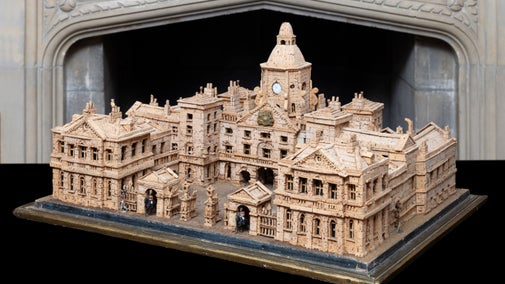
Arlington Court and the National Trust Carriage Museum's collections
Explore the objects and works of art we care for at Arlington Court and the National Trust Carriage Museum on the National Trust Collections website.

The collection of carriages at Arlington Court spans more than 400 years and boasts vehicles for all occasions. We can't be certain of the exact dates for many, but we know from old magazines and adverts when new designs appeared. From this, we can understand the evolution of coach travel from the 17th century to their use in the Second World War.
A journey by carriage between Exeter and London takes eight days in summer or 10 in winter.
The Landau is introduced into England. Landaus became very popular with the professional and middle classes as a versatile carriage for all types of driving conditions.
The Barouche is introduced into England. The travelling style of the Barouche was designed for long distances.
In addition to the folding head, this carriage had a folding wooden apron known as a water deck, and a screen of small, glazed windows to protect the occupants from the elements, all of which could be folded away during fine weather.

The Royal Mail Coach is introduced by the Post Office to speed up mail deliveries.
The coach journey from Barnstaple to Taunton takes about 14 hours.
The Antrobus Travelling Chariot, we believe, was used by Colonel Antrobus to travel to the Congress of Vienna.
There are now 69,200 registered carriages on Britain’s roads.
The Britzschka becomes popular as a travelling carriage in England.
This type of carriage was introduced to Britain from Germany and became popular with wealthy families because of its adaptability. The name comes from the Polish word for travelling wagon.
A coach journey from Barnstaple to Taunton now takes about eight hours.
The first Royal Mail Coach in North Devon leaves Barnstaple in September. It takes five hours to reach Taunton, 11 to get to Bristol, and reached London in 26 hours.
Hansom Cabs are first seen on the streets of London.
Most Hansoms were privately owned, and they had a somewhat disreputable image. The one on display in the museum dates from the late 19th century.
The Brougham makes its appearance.
The Double Brougham in the collection was built as a wedding present for Colonel F.M. Hext of Pinhoe, near Exeter. It was used during his honeymoon on the Isle of Wight and has the family crest on the door.

The Victoria carriage is named after the Queen when one is purchased for her by her son, then the Prince of Wales.
The last scheduled stage coach runs between Barnstaple and Lynton. At this point, at the end of the 19th century, there are still some 500,000 private carriages in Britain.
In the first two weeks of the First World War, the British Army purchases some 140,000 horses.
Additionally, skilled horsemen volunteer – or are conscripted – for the Armed Services. Carriage makers, wheelwrights and blacksmiths are recruited into the services or diverted into war work. Carriage use declines.
An increase in small carriage use is encouraged by the introduction of petrol rationing. The Pony Phaeton on display is one such carriage.
The National Trust sets up the carriage collection at Arlington Court; the location was chosen as Arlington had an empty stable block.
The carriages belonging to the Chichester family are thought to have been sold in 1911, when a car was purchased.
In 2004, a new wing of the carriage museum was completed to house the expanding collection.

Explore the objects and works of art we care for at Arlington Court and the National Trust Carriage Museum on the National Trust Collections website.
Explore highlights from a collection of over 40 carriages, including those used for grand state occasions, fashionable funerals and travelling around Europe in style.

The house at Arlington Court is the work of generations of the Chichester family. Discover how each heir left their mark on the building you see today.

From the ever-changing flowers of the formal Victorian Garden to picture-perfect pleasure grounds, the garden at Arlington Court is beautiful whatever the weather. Step into the hidden walled kitchen garden for variety through the seasons.

The art and heritage collections we care for rival the world’s greatest museums. Learn more about the collection of paintings, decorative art, costume, books, household and other objects at historic places.

See the breadth of our collection of works of art, furniture and more: we care for around a million objects at over 200 historic places, there’s a surprise discovery around every corner.

Discover the stories behind some of the greatest artworks and artefacts looked after by the National Trust, as told in a dedicated book, 125 Treasures from the Collections of the National Trust.
